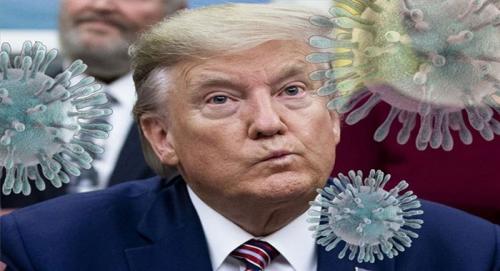The world economy towards the end of 2020
With Trump's departure, how much does the US and world outlook change?
- Análisis

The end of the year is approaching, and the COVID19 health and economic crises are still far from being resolved. There are fears of infection rate growth with the arrival of winter in the countries of the North. Europe has begun to feel the second wave of contagion and has re-installed health measures of confinement and unemployment of non-essential economic activities. The USA, the pandemic's world centre, has the highest daily rate of infection and is close to 10 million people infected. In Latin America, the health crisis trend has begun to stabilize, but the economic crisis has not. The latest economic growth projections by the International Monetary Fund (IMF) have re-estimated the impact of the health crisis and projected a much more severe drop in output, with a higher and faster recovery. Is this possible?
From many angles, the economic impact of the COVID19 containment measures is unprecedented. In the latest World Economic Outlook report, the IMF re-estimated that the world economy will contract by -4.4%, a correction of -1.03% from the June forecast. The G7 economies are to shrink by an average of -7.6%. Italy, France, and the UK are the most affected, with -10.6, -9.8, and -9.8%. For Latin America, the year-end outlook also worsened. A contraction of -8.1% was predicted, dragged down mainly by Peru (-13.9), Argentina (-11.8), Ecuador (-11), and Mexico (-8.9).
However, in almost all cases, an immediate rebound in their growth rate is expected worldwide by 2021. This optimism forgets that several economies were previously on a downward trend in their growth rate, especially the advanced and largest economies: China and the US. The pandemic has revealed significant differences between these two powers.
In particular, it highlights the immense contrast of the impact between the two largest economies. With nearly 1.3 billion people and less than 50 infections per day (10/11/2020), China has an estimated growth of 1.9 percent. It is one of the few economies that will register economic growth by 2020. For the USA, with 328 million inhabitants and 258,972 daily infections, a contraction of -4.3% has been estimated. The forecast could not incorporate the result of the presidential elections, but the outlook is complicated in any event.
With Trump's departure, how much does the US and world outlook change? The damage to multilateralism in general and the United Nations, in particular, has been very significant. Can the trade order of the World Trade Organisation be reorganised after the apparent manipulation and blocking of its arbitration mechanisms or the purpose of returning to the Paris Agreement if it has not ratified the Kyoto Protocol and suffers from deep structural dependence on the oil energy matrix? The loss of global political and economic leadership does not appear to be reversible in the short term. In four years, Trumpism accelerated the loss of hegemony and further fuelled the US economy's main structural problems.
The legitimacy of the US has weakened in the eyes of the world. The US liberal democracy has shown one of its most painful chapters. If this process had taken place anywhere else, it would have intervened in the elections. For less has it disqualified, interposed, or blocked electoral processes in other countries.
The first announcement by the newly elected president was the immediate installation of a group of experts to deal with the health crisis caused by the COVID pandemic19 and the development of a vaccine. He did not speak of his return to the World Health Organisation or the United Nations cooperation project to develop and distribute the COVID19 vaccine: COVAX. Will this be the end of "making America great again"?
While it is true that Trump's departure from the presidency will have an undeniable impact on his economic prospects, what is the scope for reinstating diplomacy in international relations and politics in the economy? For the world, what is the real space for transformation to the balances of Trumpism? For Latin America, what does this scenario represent for its economic and political relations?
Trump represented a significant problem for the US and world economy, but it is not the main one. Continuously, experts and politicians alike remind the US public opinion that it is the economy that matters. Trade and fiscal deficits will remain until the economy recovers its international competitiveness levels. Increasing the minimum wage and adhering to WTO rules will not facilitate its recovery. The change in the energy matrix is not on the horizon, which further delays it's catching up with the new leading economies' pace and making it one more primary oil exporter.
- Oscar Ugarteche, Senior Researcher "C", IIEc-UNAM, Conacyt SNI III, obela.org Project Coordinator
- Armando Negrete, Academic Technician, IIEc-UNAM, Member of obela.org
Del mismo autor
- El multilateralismo bipolar 08/03/2022
- Bipolar multilateralism 07/03/2022
- What does 2022 bring? Uncertainty 31/01/2022
- ¿Qué trae el 2022? Incertidumbre 31/01/2022
- The most expensive Christmas of the century... (so far) 20/01/2022
- La navidad más cara del siglo (hasta ahora) 20/01/2022
- Lo que pasó en el 2021 10/01/2022
- What happened in 2021 10/01/2022
- Estados Unidos: el elefante en la habitación 08/11/2021
- The elephant in the room 07/11/2021
Clasificado en
Clasificado en:
Crisis Económica
- Geraldina Colotti 07/04/2022
- Julio C. Gambina 07/04/2022
- Rafael Bautista S. 06/04/2022
- Julio Gambina 04/04/2022
- José Ramón Cabañas Rodríguez 01/04/2022








